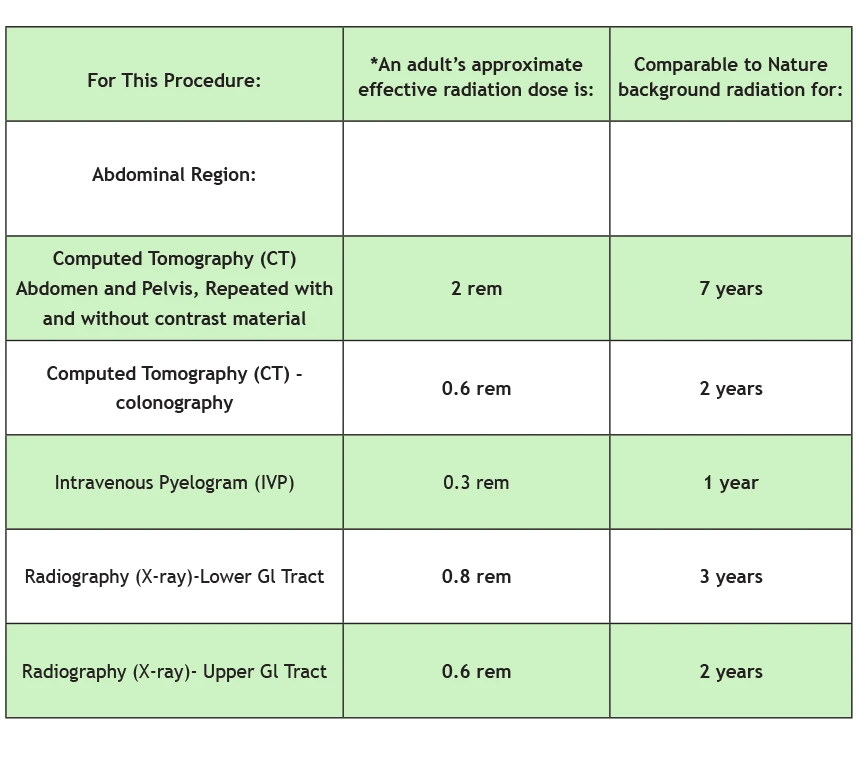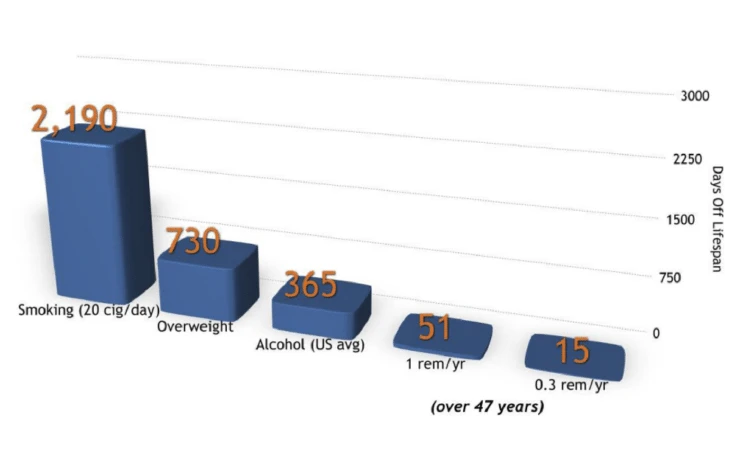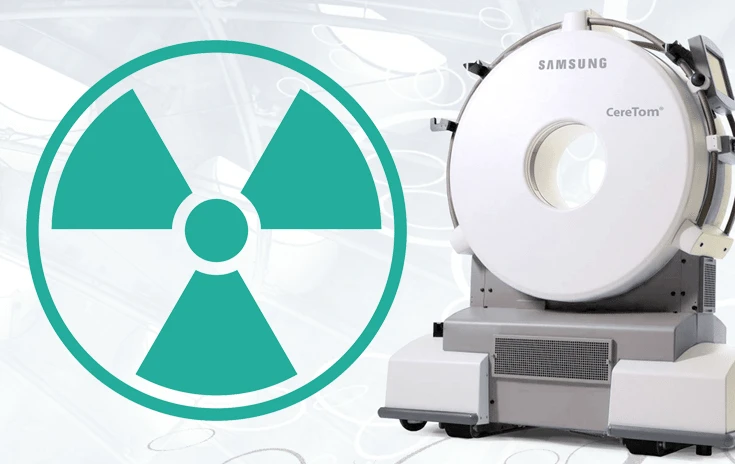Radiation exposure is a common concern among veterinarians whose practices rely heavily on computed tomography (CT) diagnostic imaging. An important distinction, however, is the characteristics of the patient. Much research (and marketing) is done in the human medical world, and rightfully so. But when this is copy-and-pasted into veterinary marketing, some simple concepts are overlooked. Before we discuss how much radiation exposure is too much, it is first important to know that the risk of biological damage is dependent on a patient’s total exposure to radiation over time, and not from a single scan.
• Radiation Exposure per scan type
• Effects of Radiation vs Other Factors on Life Span
• Technique Advice

Radiation Exposure Per Scan Type
Below a certain threshold of lifetime exposure, there is virtually no risk of biological damage, but above that threshold, there is a direct correlation between exposure and risk. Any radiation damage to individual cells takes a long time to manifest into biological effects in the body. This is why dosage reduction is so important in pediatrics, because children who are exposed to radiation at a young age often receive even more radiation dose through adolescence and adulthood as their conditions are monitored. The table below shows the effective radiation doses of various X-ray imaging modalities. Keep in mind that the occupational annual limit for radiation exposure is 5 rem per year.
Effects of Radiation vs Other Factors on Life Span
Before you worry too much, let’s examine how detrimental radiation exposure is to our health compared to smoking, being overweight, and consuming alcohol: And perhaps the most important takeaway from this chart is that effects listed from radiation take into account exposure over 47 years. You can see how this is less than relevant in the veterinary world.
Effects of Various Factors on Life Span

Technique Advice
As in radiography, it is always best to irradiate only the body part that requires imaging. Whether by collimation or lead drapes, there is never harm in over-protecting.
Conclusion
There is no reason to worry about exposing veterinary patients to too much radiation from CT scans. Animals typically undergo fewer CTs than human patients, and they do not live long enough for radiation damage to individual cells to have a noticeable biological effect on their bodies or well-being.
If you would like more information about the installation requirements associated with veterinary CT, call SOUND® at 800-268-5354. You can learn more about SOUND®’s CT systems by following these links >>> CereTom® CT | BodyTom® CT

